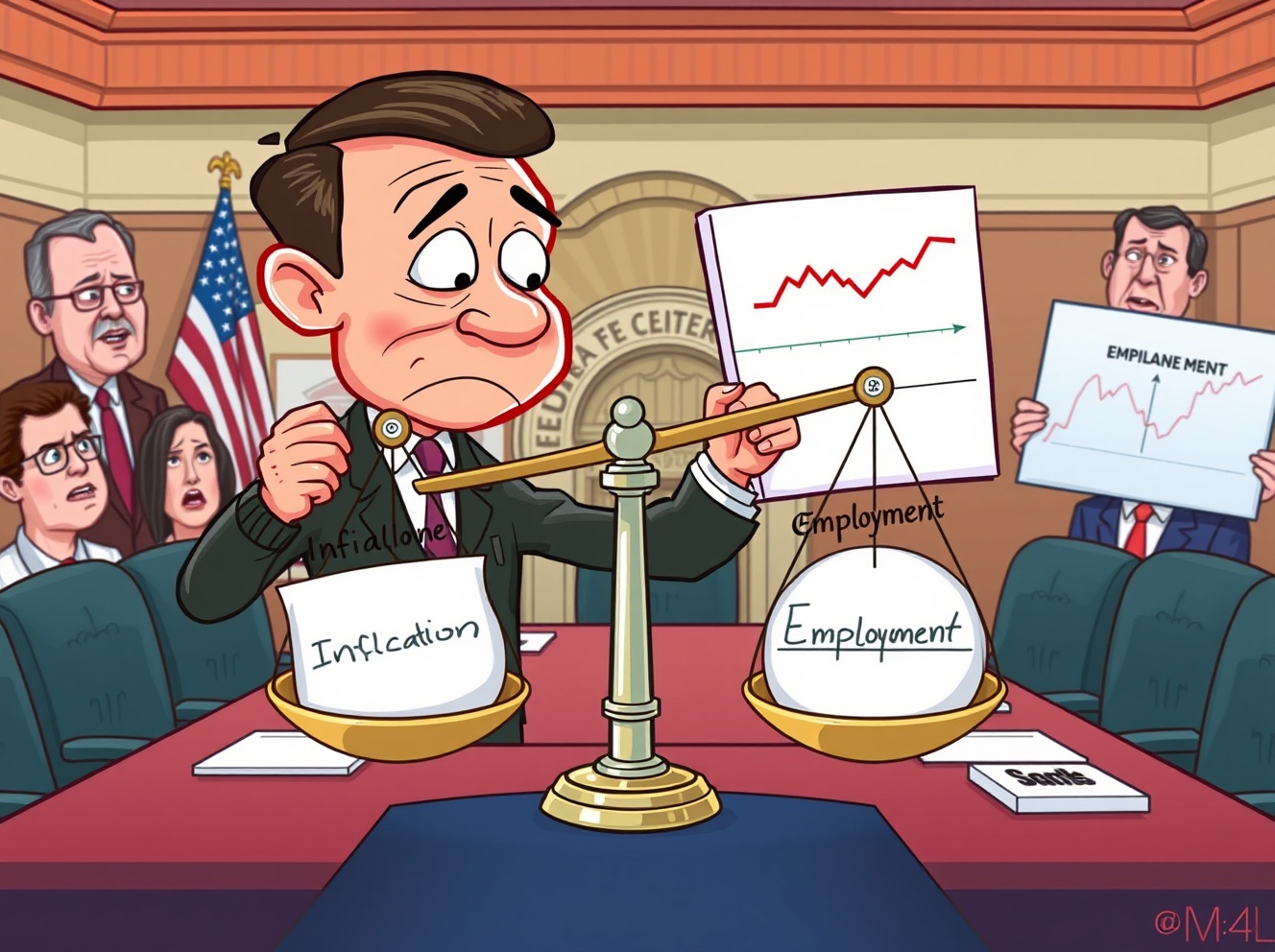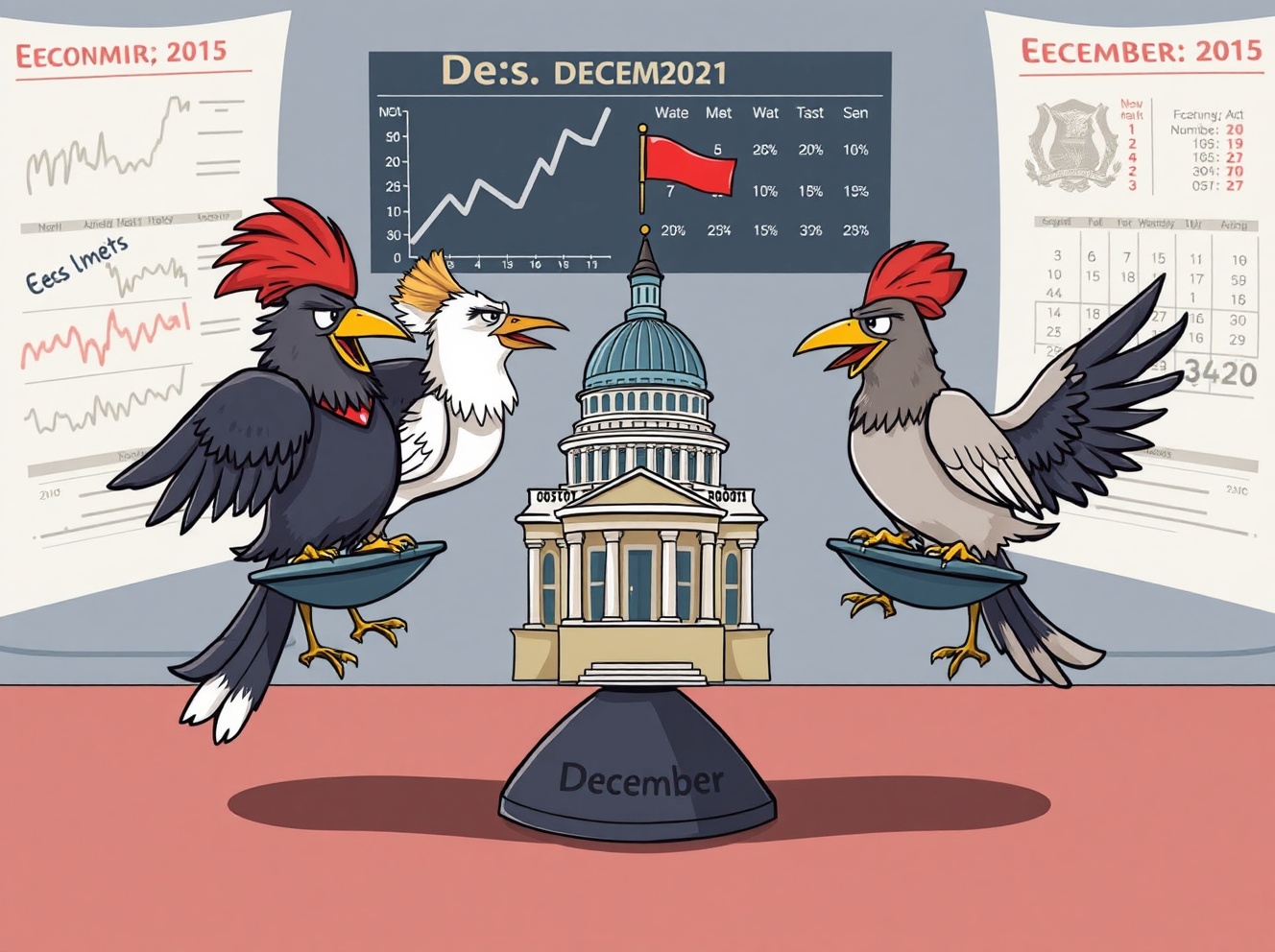Crucial Fed Rate Cut Forecast: White House Advisor Reveals Realistic 25 bp Reduction

Share:
BitcoinWorld
Crucial Fed Rate Cut Forecast: White House Advisor Reveals Realistic 25 bp Reduction
In a significant development for financial markets, White House economic advisor Kevin Hassett has provided crucial insights about the Federal Reserve’s upcoming monetary policy decisions. His comments about a potential Fed rate cut have captured attention across trading floors and economic circles worldwide.
What Makes a 25 bp Fed Rate Cut More Realistic?
Kevin Hassett, Chairman of the White House National Economic Council, recently shared his expert perspective on interest rate expectations. He emphasized that a 25 basis point Fed rate cut appears more probable than the 50 bp reduction some market participants anticipate. This assessment comes from someone who would potentially accept the Fed Chair position if offered.
The reasoning behind this forecast stems from several key factors:
- Current economic data doesn’t justify aggressive monetary easing
- Inflation concerns remain present in policy discussions
- Federal Reserve typically prefers gradual policy adjustments
- Market expectations sometimes outpace actual central bank actions
Why Would Hassett Support This Fed Rate Cut?
Interestingly, Hassett revealed his personal stance on the matter. He stated that if he served on the Federal Open Market Committee, he would likely support a Fed rate cut. This position reflects his assessment of economic conditions and appropriate policy responses.
However, he tempered expectations by noting that Chairman Jerome Powell might approach the situation differently. The divergence in potential approaches highlights how individual perspectives shape monetary policy decisions at the highest levels.
What Does This Mean for Financial Markets?
The distinction between 25 and 50 basis points matters significantly for investors and traders. A smaller Fed rate cut suggests the Federal Reserve sees the economy as relatively stable, requiring only modest stimulus. This perspective could influence various asset classes differently.
Market participants should consider these key implications:
- Bond yields may adjust based on the scale of monetary easing
- Equity markets might reassess growth expectations
- Currency valuations could shift with interest rate differentials
- Long-term investment strategies may require recalibration
How Reliable Are These Fed Rate Cut Predictions?
Hassett’s comments carry weight due to his position and economic expertise. However, it’s crucial to remember that Federal Reserve decisions involve multiple factors and committee members. The actual Fed rate cut outcome will depend on evolving economic data and collective FOMC judgment.
Market watchers should monitor several indicators between now and the next Fed meeting:
- Employment reports and wage growth data
- Inflation metrics and consumer price trends
- Manufacturing and services sector performance
- Global economic developments and trade dynamics
Conclusion: Navigating Monetary Policy Expectations
The White House advisor’s insights provide valuable context for understanding potential Federal Reserve actions. A 25 basis point Fed rate cut represents a measured approach to monetary policy adjustment. As markets process this information, investors should maintain perspective about the complex factors influencing central bank decisions.
Ultimately, economic data and Fed communications in coming weeks will provide clearer signals about the timing and scale of any policy changes. Staying informed and adaptable remains essential in this dynamic financial environment.
Frequently Asked Questions
What is a basis point in Fed rate cuts?
A basis point equals 0.01%, so 25 bp means a 0.25% reduction in the federal funds rate.
Why does Hassett think Powell won’t cut rates?
Hassett believes current economic conditions might not justify rate reductions from Powell’s perspective.
How often does the Fed change interest rates?
The Federal Reserve typically reviews rates every six weeks during FOMC meetings, adjusting as economic conditions warrant.
What’s the difference between 25 bp and 50 bp cuts?
A 50 bp cut provides twice the economic stimulus but might signal greater concern about economic weakness.
Could Hassett become Fed Chair?
He stated he would accept the position if offered, but presidential appointments determine Fed leadership.
How do rate cuts affect everyday consumers?
Lower rates typically reduce borrowing costs for mortgages, car loans, and credit cards while decreasing savings account yields.
Found this analysis helpful? Share this article with other investors and market watchers on your social media channels to spread these crucial Fed rate cut insights!
To learn more about the latest Federal Reserve policy trends, explore our article on key developments shaping monetary policy and interest rate forecasts.
This post Crucial Fed Rate Cut Forecast: White House Advisor Reveals Realistic 25 bp Reduction first appeared on BitcoinWorld.
Crucial Fed Rate Cut Forecast: White House Advisor Reveals Realistic 25 bp Reduction

Share:
BitcoinWorld
Crucial Fed Rate Cut Forecast: White House Advisor Reveals Realistic 25 bp Reduction
In a significant development for financial markets, White House economic advisor Kevin Hassett has provided crucial insights about the Federal Reserve’s upcoming monetary policy decisions. His comments about a potential Fed rate cut have captured attention across trading floors and economic circles worldwide.
What Makes a 25 bp Fed Rate Cut More Realistic?
Kevin Hassett, Chairman of the White House National Economic Council, recently shared his expert perspective on interest rate expectations. He emphasized that a 25 basis point Fed rate cut appears more probable than the 50 bp reduction some market participants anticipate. This assessment comes from someone who would potentially accept the Fed Chair position if offered.
The reasoning behind this forecast stems from several key factors:
- Current economic data doesn’t justify aggressive monetary easing
- Inflation concerns remain present in policy discussions
- Federal Reserve typically prefers gradual policy adjustments
- Market expectations sometimes outpace actual central bank actions
Why Would Hassett Support This Fed Rate Cut?
Interestingly, Hassett revealed his personal stance on the matter. He stated that if he served on the Federal Open Market Committee, he would likely support a Fed rate cut. This position reflects his assessment of economic conditions and appropriate policy responses.
However, he tempered expectations by noting that Chairman Jerome Powell might approach the situation differently. The divergence in potential approaches highlights how individual perspectives shape monetary policy decisions at the highest levels.
What Does This Mean for Financial Markets?
The distinction between 25 and 50 basis points matters significantly for investors and traders. A smaller Fed rate cut suggests the Federal Reserve sees the economy as relatively stable, requiring only modest stimulus. This perspective could influence various asset classes differently.
Market participants should consider these key implications:
- Bond yields may adjust based on the scale of monetary easing
- Equity markets might reassess growth expectations
- Currency valuations could shift with interest rate differentials
- Long-term investment strategies may require recalibration
How Reliable Are These Fed Rate Cut Predictions?
Hassett’s comments carry weight due to his position and economic expertise. However, it’s crucial to remember that Federal Reserve decisions involve multiple factors and committee members. The actual Fed rate cut outcome will depend on evolving economic data and collective FOMC judgment.
Market watchers should monitor several indicators between now and the next Fed meeting:
- Employment reports and wage growth data
- Inflation metrics and consumer price trends
- Manufacturing and services sector performance
- Global economic developments and trade dynamics
Conclusion: Navigating Monetary Policy Expectations
The White House advisor’s insights provide valuable context for understanding potential Federal Reserve actions. A 25 basis point Fed rate cut represents a measured approach to monetary policy adjustment. As markets process this information, investors should maintain perspective about the complex factors influencing central bank decisions.
Ultimately, economic data and Fed communications in coming weeks will provide clearer signals about the timing and scale of any policy changes. Staying informed and adaptable remains essential in this dynamic financial environment.
Frequently Asked Questions
What is a basis point in Fed rate cuts?
A basis point equals 0.01%, so 25 bp means a 0.25% reduction in the federal funds rate.
Why does Hassett think Powell won’t cut rates?
Hassett believes current economic conditions might not justify rate reductions from Powell’s perspective.
How often does the Fed change interest rates?
The Federal Reserve typically reviews rates every six weeks during FOMC meetings, adjusting as economic conditions warrant.
What’s the difference between 25 bp and 50 bp cuts?
A 50 bp cut provides twice the economic stimulus but might signal greater concern about economic weakness.
Could Hassett become Fed Chair?
He stated he would accept the position if offered, but presidential appointments determine Fed leadership.
How do rate cuts affect everyday consumers?
Lower rates typically reduce borrowing costs for mortgages, car loans, and credit cards while decreasing savings account yields.
Found this analysis helpful? Share this article with other investors and market watchers on your social media channels to spread these crucial Fed rate cut insights!
To learn more about the latest Federal Reserve policy trends, explore our article on key developments shaping monetary policy and interest rate forecasts.
This post Crucial Fed Rate Cut Forecast: White House Advisor Reveals Realistic 25 bp Reduction first appeared on BitcoinWorld.


